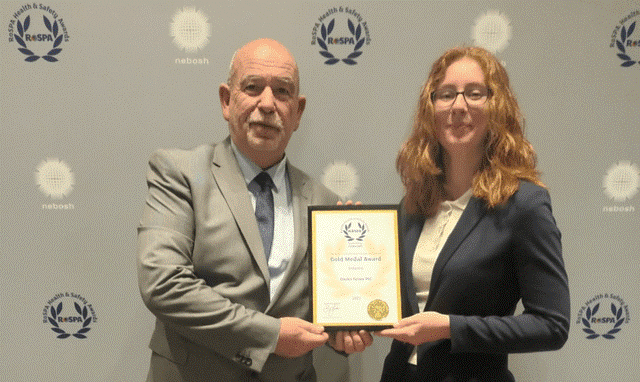Anne van de Heetkamp, VP of Product Management GTC at Descartes writes exclusively for ITM the technical aspects around politics, regulations and numbers for the Covid-19 vaccine
The EU blocked exports of AstraZeneca’s COVID-19 vaccine and it looks like that block will stay in place until the end of June. At the end of March, India announced a block on exports of AstraZeneca as well. The U.S., the second largest manufacturer of COVID vaccines (after China), has started exporting vaccines but only after it was assured domestic demand was satisfied. Initially, exports of AstraZeneca (which was not yet approved in the U.S.) went to Canada and Mexico. With eight major manufacturing jurisdictions and every country in the world in need of vaccines, the struggle over distribution is not likely to go away soon. Export restrictions are an unfortunate twist in the saga.
The numbers
As of May 6, 2021, 1.23 billion doses have been provided across 174 countries, which is about 8% of the global population. The Seychelles lead the charge (66.5% vaccinated), taking over from Israel where almost 58% is vaccinated. The US is at 39.2%, U.K. at 38.3%, and the European Union at 18.3% (per Covid-19 Vaccine Tracker (bloomberg.com)).
US manufacturing has ramped up so much (for example, March production was almost triple that of the 48 million in February) that domestic needs are on schedule to be met around June, likely sooner as output continues to increase. It is projected that, by year’s end, there will be a 750+ million surplus of vaccines in the U.S., and that includes all vaccines needed for Canada, Mexico and reserves for the US.
Global manufacturing is at a pace to have manufactured 13 billion vaccines by end of 2021, which would be sufficient to vaccinate around 80% of the world’s population. It likely takes about 75% of the population to be vaccinated for herd immunity.
China and the EU are the lead exporters of COVID vaccines (the EU has exported over 200 million doses, which includes exports to the U.K.). China has indicated it will continue to export the vaccine with Chinese needs at relatively low urgency levels, but its efficiency remains in doubt. The U.S. committed to export 10% of its production in June, and Pfizer also joined the ranks of vaccine exporters.
The US has stated it backs the waiving of patent protection of the vaccine. Sharing the ‘recipe’ is a step, but would not solve challenges when it comes to sourcing ingredients, the conditions under which the vaccine needs to be manufactured and stored, etc. The Pfizer-manufactured BioNTech vaccine requires 286 materials from 86 suppliers in 19 countries. This this includes fatty nanoparticles that come from England. AstraZeneca’s vaccine requires more than 20 suppliers from more than 15 countries.
After 15 million doses of Johnson & Johnson’s vaccine were contaminated at a Baltimore factory, U.S. authorities have delayed future shipments pending investigations and have changed supervision of production from partner Emergent BioSolutions to Johnson & Johnson.
Global COVID cases and deaths have been on a steady incline since beginning of March with heavy spikes in regions/countries such as Latin America, South East Asia, and India.
In summary: still a long way to go on both the manufacturing and vaccination fronts.
Politics and regulations:
When allocating resources (e.g., medication, vaccinations, hospital staff, etc.), authorities are forced to make life and death decisions. Arguably other than in the US, it implies that at this stage when countries/jurisdictions where vaccines are manufactured are exporting them, the number of casualties in their own population is likely to increase.
For the UK, Brexit has created a situation where shipments to the UK from the EU are now considered an export. This means EU authorities have control over whether or not to allow such exports, including exports of COVID vaccines.
Local authorities typically have the power to intervene with regular business in case emergencies occur. This also covers exports and, in this case, exports of vaccines. Given almost every country has called a state of emergency because of COVID, authorities can argue that, based on different assessments (e.g., contracts, emergencies, medical clearance), specific items can be prohibited from export.
Just about every country has specific regulations in place for exporting medical supplies whether it’s machines that go ‘bing’ (or ‘ping’), medication, or vaccines. The relevant export regulations are different from the Export Commodity Control Number (ECCN or ECN)-based legislation for dual-use goods. Medication is not a dual-use good and does not have an ECCN code. For example, for the US, exports of drugs/medication are subject to the FDA Export Reform and Enhancement Act of 1996 and typically require an FDA license to export, primarily so the US knows what is going out and the importing country understands what exactly is coming in. This is important as there are country-by-country differences in which medications are sold over the counter versus prescription versus even flat out illegal. Try shipping simple vitamin supplements and you’ll find out.
In the US, COVID vaccine manufacturing takes place under the U.S. Defense Production Act. The Act came into play in 1950 and has been applied across administrations since (over 50 times). The bottom line is that the Act requires businesses to assist in matters of national defense/crisis. As the pandemic qualifies, U.S. manufacturers are producing the vaccine under the Act and, until US needs are met, other countries will have to be patient.
What happens when numbers, regulations and politics coincide? The outcome is fairly predictable once governments realise what local effects export of COVID vaccines or medications can have. They find a way to stop it. And the blame-game and posturing begins.
Other considerations
The export restrictions placed on COVID vaccines are in principle no different than with earlier pandemic-related exports. For example, back in early 2020, protective measures were taken by the UK and France and an export ban or restriction on COVID treatment drugs (and medical supplies) was put in place.
With AstraZeneca facing production challenges, its promises to specifically the EU have not been kept. Problems that forced the downward adjustment of production numbers in both Q1 and Q2 have been well publicised, as have accusations of stockpiling and prioritising the UK (AstraZeneca was developed by the company in cooperation with the University of Oxford). The main reason behind the EU export restrictions on vaccines is that, as long as AstraZeneca has not fulfilled its contractual obligations with the EU, it is allowed to block exports of the vaccine. Note, however, that through March 24, 2021 the EU only blocked 1 export shipment – against 381 exports approved by EU authorities (in numbers: 250,000 total blocked vaccinations compared to 4 million exported vaccines to 33 countries).
India followed suit and is now also blocking exports of vaccines. With Indian production still on the low end, this implies exports from India (AstraZeneca, Covaxin) will be very limited for the foreseeable future (6 months).
The UK government, after the Brexit challenges, could hardly afford another setback and with a 38% vaccination rate is indeed doing much better than the EU (18%). At the moment, this comes at the expense of a lot of political capital. The British authorities are accused of obtaining vaccines ahead of their turn and getting their vaccines shipments prioritised.
AstraZeneca is yet to be approved in the US and after the Biden Administration approved exports of 2.5 million vaccines to Mexico and 1.5 million to Canada, announcements followed that the US will increase export numbers in May (Pfizer has been shipping vaccines from its Belgium plant to Mexico).
In short: each country weighs legal obligations against national emergency against international cooperation and collaboration. For once, money seems a non-factor, which is something new to all of this.
Short-term Expectations
As long as demand exceeds supply, there will be news to share on export restrictions and other trade-related aspects. Manufacturing is ramping up, but it will take a few months before local markets, export priorities, and contracts are sorted. Although it has been relatively quiet in April, expect that during this time outrage, more restrictions, smooth talking, and a lot of numbers will hit the airwaves. We are about a half a billion fully vaccinated out of an almost 8 billion global population. In a quarter of all countries, the vaccinations have yet to begin. Only a handful of countries are vaccinating at a rate that allows some vague resemblance of light at the end of the needle to be detected.
Long-term Hope
Hopefully much further away (i.e., the next pandemic) than short-term expectations is the need to apply the lessons learned from this pandemic. Three things come to mind: global cooperation, a legislative framework, and contractual transparency.
Global Cooperation
There is little argument that a global, cooperative approach to a global crisis can save lives. The sum of all individual efforts is less than one coordinated global effort. Or the sum of all Vaccine Nationalism does likely not add up to a global solution. Something like that. Information exchange is key and ranges from sharing medical information to supply chain visibility. Although fair predictions can be made as to where manufacturing capacity will exist or be created, there are no guarantees. And so a global network that not only analyses but also is the foundation for solutions and fair distribution of any given solution (e.g., a vaccine?, software?, fuel?) is needed. For a pandemic, the WHO is the logical lead, but for different crises other organisations may be more relevant.
Legislative Framework
Local legislation has allowed countries to apply a ‘Me First’ policy (aka vaccine nationalism), which risks a great number of other peoples’ lives. It would be helpful if there were a framework agreement on (international) responsibilities of local governments as well as components such as export guarantees and priority rankings.
Transparency
In crisis time, finding a single source of truth is difficult. Circumstances change rapidly. But using the export restrictions on COVID vaccines as an example, it would sure be helpful if there were more transparency and consistency when it comes to contractual commitments and the way in which numbers are reported.
Commentary: Anne van de Heetkamp, VP of Product Management GTC at Descartes
As long as demand exceeds supply, there will be news to share on export restrictions and other trade-related aspects. Manufacturing is ramping up, but it will take a few months before local markets, export priorities, and contracts are sorted. Although it has been relatively quiet in April, expect that during this time outrage, more restrictions, smooth talking, and a lot of numbers will hit the airwaves. We are about a half a billion fully vaccinated out of an almost 8 billion global population. In a quarter of all countries, the vaccinations have yet to begin. Only a handful of countries are vaccinating at a rate that allows some vague resemblance of light at the end of the needle to be detected.
Hopefully much further away (i.e., the next pandemic) than short-term expectations is the need to apply the lessons learned from this pandemic. Three things come to mind: global cooperation, a legislative framework, and contractual transparency.
In crisis time, finding a single source of truth is difficult. Circumstances change rapidly. But using the export restrictions on COVID vaccines as an example, it would sure be helpful if there were more transparency and consistency when it comes to contractual commitments and the way in which numbers are reported.
Commentary: Mike Yarwood, TT Club’s MD Loss Prevention
It is not just politics, pandemic and regulation affecting the distribution of the vaccine in the supply chain. All actors in the global supply chain must be increasingly alert to a range of risks due to criminal activity targeting vaccine supply. From theft and illegal sale of authentic vaccines to counterfeiting, substitution with fake pharmaceuticals and contamination, the threats posed by criminals attempting to take advantage of this very high -value cargo, are widespread.
It is probable that the market for counterfeit pharmaceuticals is worth US$400 billion a year and the World Health Organisation (WHO) estimates that up to 1 million people die annually from counterfeited drugs. The current and future supply chain challenge to distribute the COVID-19 vaccines, in all their forms, from various countries of production, will mean that these figures are likely to grow. Multiple incidents have already been reported.
Should the responsibilities of the pharmaceutical companies and organisations funding the supply, end at the point of production and sale, leaving local governments to manage security through the supply chain? A degree of uncertainty will prevail and security effectiveness differs from region to region. Operators who are called upon to transport, store and deliver such vital supplies therefore must be super vigilant in guarding against loss through theft and the infiltration of fakes into the supply chain.
To stay up to date on the latest, trends, innovations, people news and company updates within the global trade and logistics market please register to receive our newsletter here.
Media contact
Rebecca Morpeth Spayne,
Editor, International Trade Magazine
Tel: +44 (0) 1622 823 922
Email: editor@intrademagazine.com





